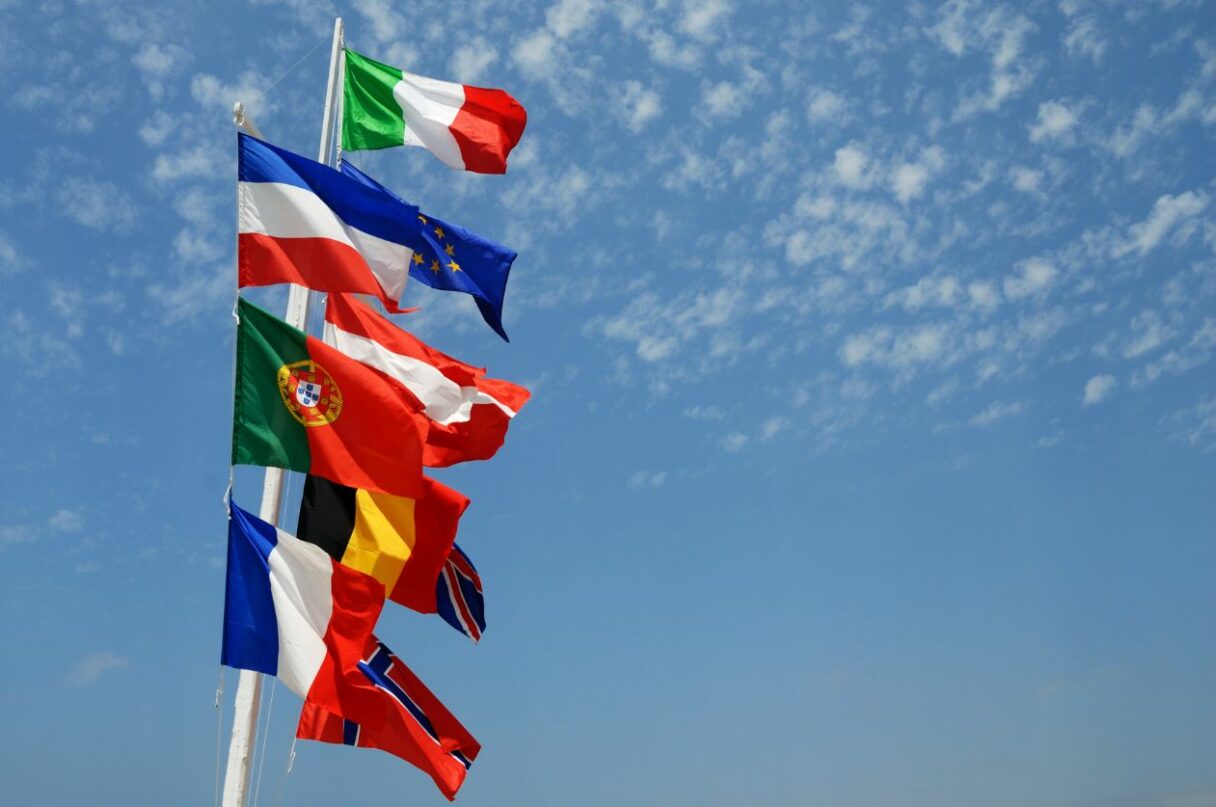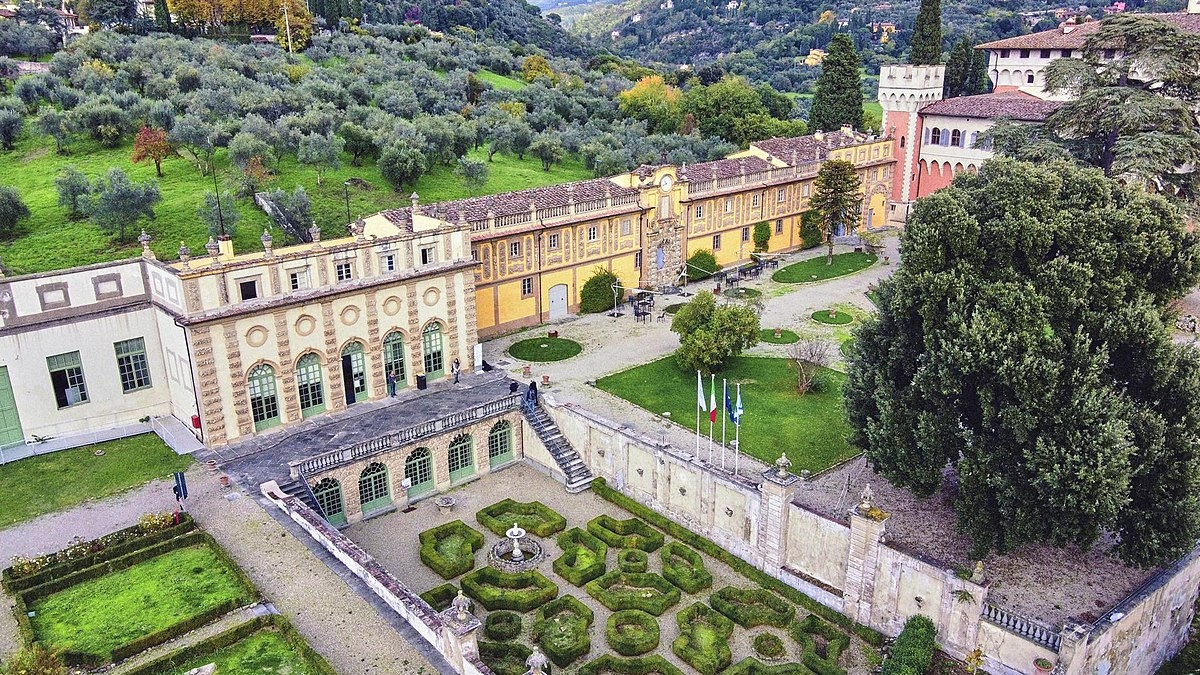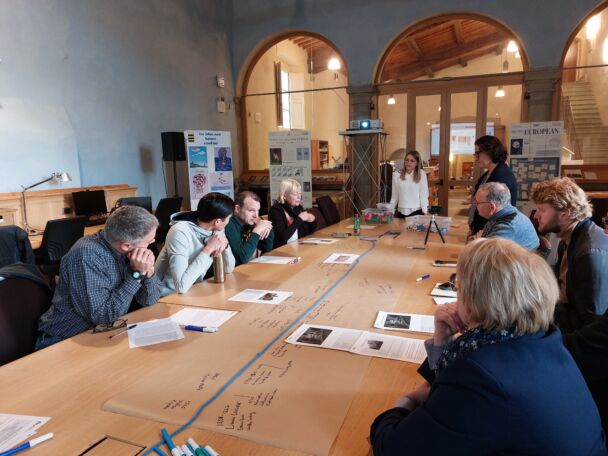Introduction
Cultivating Active Citizenship in schools has become crucial in order to proactively engage students in understanding, respecting, and sharing European common values. This enterprising and open-minded approach involves participation in civic activities, and advocacy for social and political issues, and contributes to the improvement of society.
For this reason, it is extremely important to convey these values by creating learning activities based on active citizenship to remove social barriers and lay down the foundation for a solid European Identity. Moreover, including these principles in school curricula can also boost the awareness among your pupils about the opportunities and rights we acquire as European citizens.
From this perspective, European Cultural Heritage constitutes the bedrock for shaping a deeper sense of belonging to a common European family and connecting the common roots of the different European citizens. In other words, it can be regarded as a starting point for reflections on the common traits of various cultures, populations, and human rights.
The Importance of Promoting EU Active Citizenship at School

EU citizenship is a unique concept that complements national citizenship in the member states of the European Union. Introduced by the Maastricht Treaty in 1992, EU citizenship grants certain rights and privileges to all citizens of EU member states, including the right to move and reside freely within the EU, the right to vote and stand in local and European Parliament elections, and the right to seek assistance from diplomatic and consular authorities of any EU country while outside the EU.
EU citizenship goes beyond geographical boundaries and creates a sense of belonging to a larger European community. It fosters the idea of a united Europe where people from diverse backgrounds and cultures come together to work towards common goals and values.
Building awareness about European citizenship among students promotes the understanding of the rights and responsibilities stemming from it. This education empowers pupils to be actively engaged in the democratic processes of the European Union.
Moreover, it encourages cultural exchange, tolerance, and appreciation of Europe’s rich diversity, which are crucial in an increasingly globalized world. By nurturing a sense of European identity early on, students are more likely to become informed and engaged citizens who can contribute positively to the development of the European project and the promotion of peace, and cooperation in the future.
European Citizenship also emphasizes the importance of grasping how global and European dynamics impact daily life at the local level. It recognizes the interplay between local experiences and broader international and European contexts. Europe can play a pivotal role in this regard, acting as a transnational platform for fostering communication and collaborative efforts that extend beyond its borders and engage with the global community.
By teaching these values, students will be far more aware of the vast world beyond the boundaries of their close communities, and Europe can serve as a gateway to expand their horizons, acquire knowledge, and actively participate in a larger context.
Moreover, collaborating with fellow students on a European scale has the potential to yield more streamlined solutions and a more comprehensive approach to tackling global challenges. It opens the door to enhanced problem-solving and a more inclusive viewpoint when addressing global issues. European citizenship means precisely that, to share values beyond one’s national borders and create shared solutions to common problems.
The Benefits of Cultural Heritage Education

European Cultural Heritage refers to the collective set of tangible and intangible elements, traditions, artifacts, places, and practices that are inherited from past generations within the European territory. This heritage encompasses a wide range of aspects, including historical buildings, artworks, archaeological sites, traditional knowledge, rituals, languages, music, folklore, and other expressions of a society’s identity and history.
“Cultural heritage is a group of resources inherited from the past which people identify, independently of ownership, as a reflection and expression of their constantly evolving values, beliefs, knowledge, and traditions. It includes all aspects of the environment resulting from the interaction between people and places through time.”
“A heritage community consists of people who value specific aspects of cultural heritage which they wish, within the framework of public action, to sustain and transmit to future generations.”1
Cultural Heritage is the cornerstone upon which European identities are built, serving as a powerful force in nurturing active citizenship. The deep historical roots and shared cultural identities embedded in Europe’s heritage provide a sense of continuity and unity, bridging the past with the present. This unity extends beyond national boundaries, as the preservation of diverse languages, traditions, and customs enriches the collective European identity.
Cultural Heritage Education is a method that focuses on utilizing cultural heritage to facilitate learning. It takes place not only within the confines of a traditional classroom but also in various informal learning settings such as museums, heritage sites, historical archives, and through social interactions and cross-generational family learning experiences.
In essence, heritage education leverages the tangible and intangible aspects of a culture’s history, traditions, and artifacts to enrich the educational process. By incorporating real-world examples and experiences related to cultural heritage, educators can engage students on a deeper level, fostering a greater understanding of the subject matter and creating a more immersive and memorable learning environment.
3 Learning Activities for European Citizenship and Cultural Heritage Education

Integrating the values of European Cultural Heritage and European Citizenship within school curricula is essential for nurturing informed, engaged citizens.
By weaving these elements into education, we empower the next generation to appreciate their cultural roots while fostering a sense of shared European identity.
1) European Aim and Values Roundtable
This activity aims to engage students in a discussion about European Aims and Values, including democracy, human rights, tolerance, diversity, and the rule of law. Start by asking your pupils to enlist their personal values ladder in order of priority and give them time to reflect on the meaning of each value they have chosen.
Afterwards, ask them to evaluate if their values belong to categories such as personal, societal, and universal and smoothly start a debate to select which ones are the most beneficial for a given community.
Then, introduce the concept of European Aims and Values – emphasizing their universality and their impact on local and global politics – and give your students to read and analyze relevant articles or official documents from the European Union bodies.
Finally, assign to each student a European Aim/Value and create a roundtable to discuss how these values can positively impact the local community. You can also conclude the discussion by creating a list of classroom rules and behaviors inspired by European values in order to stimulate active citizenship in the school environment.
2) Debate on European Citizenship
Structuring a debate within your classroom on European Citizenship could help your students to understand in an active way, rights, duties, and responsibilities deriving from being part of the European community. Typically, a debate is a discussion around a given topic, problem, or resolution. In democratic societies, this is the usual technique for addressing and solving problems.
Whether it’s a board meeting, a public hearing or a legislative assembly these exchanges of ideas are the typical way decisions are reached. In this case, the main argument of the debate will be the pros/cons of being a European Citizen.
Firstly, the class must be divided into three groups:
- The resolution supporters (affirmative team)
- The resolution opposers (opposing team)
- The judges of the quality of statements and declarations – usually the teacher is part of this group.
Therefore, you can start the activity by having a brief overview of the history of European Citizenship and identifying what are the included rights. Then, each team works autonomously to create coaxing statements to convince the judges who, in the meantime, can work on the assessment criteria of the debate.
After the assessment criteria are clear to everyone, every team exposes its theses and consequently counter-argues those of the opposing group. Depending on how long you want the debate to last, you create as many sessions as you want. In the end, the board of judges declares the debate’s winning team.
3) European Heritage Label Project Work
This exercise enables students to grasp the incredible value of Europe’s Cultural Heritage and stimulates their participation in Active Citizenship which aims to protect and valorize the European Heritage. First of all, start the lesson with a collective brainstorm around the concept of Cultural Heritage and define what are the different categories – tangible, intangible, digital, natural etc.
Then, you can select – or make your pupils choose – certain monuments among the European Heritage Label Map. Split your class into expert teams assigning to each one a precise monument to study in order to prepare a final presentation/product to show to the other groups.
The presentation/product must highlight the artistic and historical features and open a potential debate on the European Union values it embodies. An additional stimulus for your students could be to organize a cultural visit to the monument assigned to the group with the best final work.
An Exciting Training Opportunity in Florence

For many years, the Historical Archives of the European Union (HAEU) in Florence has played a vital role in preserving our common European Heritage sources and being an indispensable engine for fostering educational activities aimed at the consolidation of a European Identity and Citizenship.
Therefore, we are excited to promote our collaboration with HAEU in this field with a brand new course in our catalog Teaching European Identity: a Cultural Heritage Approach.
The HAEU is the European official repository of historical documents, manuscripts, and records that narrate the journey of the European integration process.
The institution’s main purposes are the preservation and protection of EU documents, research and study for experts in the field, the education of young generations, and above all to make people aware that the European Union is a supportive body close to the needs of European citizens. It represents the heart and the memory of Europe’s political-cultural heritage and encapsulates the historical process that led to the creation of European Citizenship.
The Historical Archives of the European Union are organizing tailored educational programs for students of all ages, from primary school to university. These programs use original documents to explain the European Union, democracy, and citizenship, creating spaces for reflection and discussion.
As some of our course participants so aptly said after the visit to the Archives: “European identity means creating something together without diminishing our own cultures and values, using them also to connect older to new generations.”
By offering access to primary sources, the HAEU allows people to explore the real life of the EU and the profound transformation it has undergone over the years. Here you can find all the information about the HAEU educational program.
In the year 2000, the Italian government acquired Villa Salviati, in Florence, to serve as the location for the Historical Archives of the European Union (HAEU). Today, this stunning Renaissance building and its surrounding gardens also accommodate the Law and History Departments of the European University Institute and the Academy of European Law.
If you are curious to learn more about this topic, don’t miss out on our new course Teaching European Identity: a Cultural Heritage Approach in collaboration with the Historical Archives of the European Union (HAEU). The course will take place at the HAEU headquarters in the magnificent Villa Salviati in Florence!
Other useful resources
Free online courses funded by the Erasmus project EUTEAM
- Teaching the European Union through Game-Based Learning
- Teach the EU through Collaborative and Student-Centered Learning
- Becoming an Active Citizen of the EU (Primary School)
- Becoming an Active Citizen of the EU (Secondary School)
References
- Council of Europe Framework Convention on the Value of Cultural Heritage for Society, art. 2. CETS 199 – Council of Europe Framework Convention on the Value of Cultural Heritage for Society (coe.int) ↩︎


Great and comprehensive article by Pietro Antichi